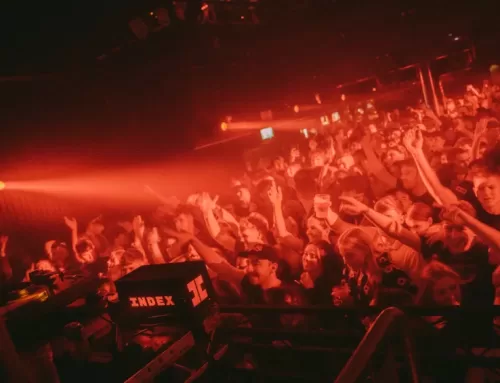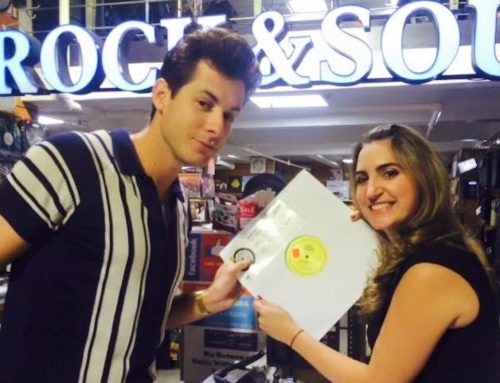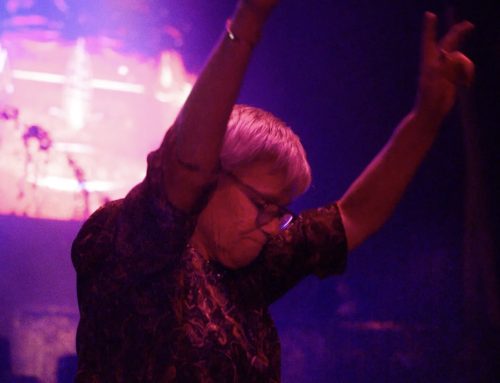About a month before thousands chanted “Disco sucks!” at Chicago’s Comiskey Park, Gino Soccio was ensconced in his Montreal studio, sipping coffee with cognac and laying down tracks for his second LP. Leaning against a twenty-four-channel mixing desk, Soccio spoke like a disco evangelist during a June 1979 interview with the Canadian Press: “Disco is more than just music. It’s a social movement, and I’m not jiving you when I say it’s spreading to epidemic proportions. It fills a demand for people who want to blow their minds dancing.”
Originally published as “Invisible Man” in Wax Poetics Issue 55
Soccio had been blowing plenty of minds over the past year. His debut LP’s lead single, “Dancer,” had topped the Billboard disco charts for six weeks, propelling his LP Outlineonto more than a million turntables globally. Slim and wide-eyed with a handlebar moustache and mane of dark hair, Soccio was immediately hailed as a disco auteur and a synth wizard. Trained in classical orchestration, Soccio created music that mixed the glamour of European disco with the gritty bottom-end of American R&B.
From 1978 to 1985, he released music at a blistering rate: four full-length albums and a clutch of 12-inches under his own name; singles and EPs under different monikers; production and writing for other artists; a motion picture soundtrack.
But shortly after a 1984 alleged Montreal police-brutality incident, Soccio vanished. There were rumors: He had lost his mind. He’d become a vagrant. He’d become a reclusive shut-in. While many believe Soccio is another disco-inferno-turned-dance-floor burnout, the untold truth about why one of the era’s singular talents abandoned his career is a tale of ego, conspiracy, and betrayal.
I’ve Put Gino Soccio Behind Me
The voice on the phone has a slight accent that’s hard to place. It has the kind of tone that can only be earned by years of cigarettes. After this author’s search that spanned a year and ended with a bizarre twist and ten digits, the past had finally caught up with Gino Soccio.
“I built a wall between me and the media. After twenty-five years, you run out of shit to say,” Soccio tells Wax Poetics. In an age when many musicians retire just to come back again, and others fight to stay in the spotlight, Soccio is an anomaly: He no longer makes music. He claims to not use email. There are hints he uses an assumed name, as he says cryptically, “I’ve put Gino Soccio behind me.”
Listen to our 57-minute Gino Soccio mix!
A week after that first conversation, Soccio is back on the phone, talking about his unlikely entry into disco. He’s agreed to his first interview in two decades, but only if personal details and information about his current life remain hidden.
Born in September 1955, Soccio started playing piano at age eight and was playing Bach sonatas by eleven. Switched on to electronics by Kraftwerk, Stockhausen, and Wendy Carlos in the early ’70s, he started renting synths and earned a reputation as one of Montreal’s best keyboard specialists.
Studying philosophy at the University of Montreal, Soccio earned his living as a session man, and in 1975, he got a call from a local producer named Pat Deserio who was putting together a “disco” record. Soccio had never done disco and didn’t care much for the genre. But he showed up to the studio and remembers seeing a roomful of ARPs, Moogs, and Hammonds, along with a wooden box that contained a primitive, homemade drum machine. When Soccio asked where the other band members were, the engineer pointed back at him and said, “You’re it!”
Deserio’s concept was to make a disco version of Ravel’s “Bolero” and release it with a few other tracks under the banner Kebekelektrik. And Soccio would play every note. “It was very labor-intensive,” says Soccio, “but at the same time, I had free rein of the entire studio, which had never happened [before]. It was a really great learning experience. I had never done disco. As you’re going along doing it, you fall right in love with it.” The Kebekelektrik sessions also spawned “War Dance,” an orgy of analog squirts and electronic flourishes that Soccio wrote and recorded on the spot, warts and all. “I was scared shitless of that one,” he says. Buried on the B-side, Soccio the perfectionist was told no one would ever hear the track.
The four-song LP Kebekelektrik was given the remix treatment by Tom Moulton and released in the U.S. on Salsoul in 1978. “Bolero”—which took up the entire A-side—was considered to be the lead track, but it was “War Dance” that caught fire on dance floors. Curious, Soccio went to Montreal’s Lime Light where DJ Robert Ouimet spun for a sexually diverse crowd and waited around until the song came on. Two hours later, Soccio witnessed the reaction. “I’m just about to leave,” Soccio says, “and then ‘War Dance’ comes in, and everyone had every lick of it. And I got it there. That was an epiphany.”
Shocked that this mistake-ridden jam could move a dance floor, Soccio leveraged the money he’d earned and set out to record a real “artist album,” something that would make up for the hastiness and mistakes of “War Dance.” A fan of Rubber Soul, Soccio wanted to make a disco statement. “I wasn’t a singles guy. It was an album or nothing.” With a $12,000 budget, Soccio used his summer break to track after-hours at Listen Audio in Old Montreal. “On my ten-speed bike, I’d shoot down to the studio and record for five or six hours until the cleaning lady came in.”
The sessions were marked by heavy use of synths and grease-pencil-meets-razor-blade tape editing. Typical of his approach was the song called “Dancer,” written and recorded as a four-minute tune but later doubled in length through mix-downs, re-edits, and loops.
A few months later, with his debut album still doing the demo rounds in Canada, Soccio was recruited to produce a project called Witch Queen, with sessions in Muscle Shoals, Alabama. Peter Alves, a Canadian studio veteran hired to coproduce, says the Muscle Shoals sessions were fruitful but also daunting, given that legendary artists from the Stones to Aretha had cut at the studio: “And here we are, a couple of bozos from Canada!”
Witch Queen was a one-off, but it gave Soccio connections to Black musicians from the South and exposed him to real American R&B, two touchstones he would revisit throughout his career. As Soccio was in Muscle Shoals, his full-length record was being shopped to U.S. labels—a move that would land him greater exposure but also one that would eventually sow the seeds of his professional downfall.
>> Read Full Article https://www.waxpoetics.com/blog/features/articles/invisible-man/?fbclid=IwAR0A4h-w5RWko91ARbhV1kAh5-SQZTRBcDipqOq1CJvfaylBE715fcb3SHc








Leave A Comment
You must be logged in to post a comment.